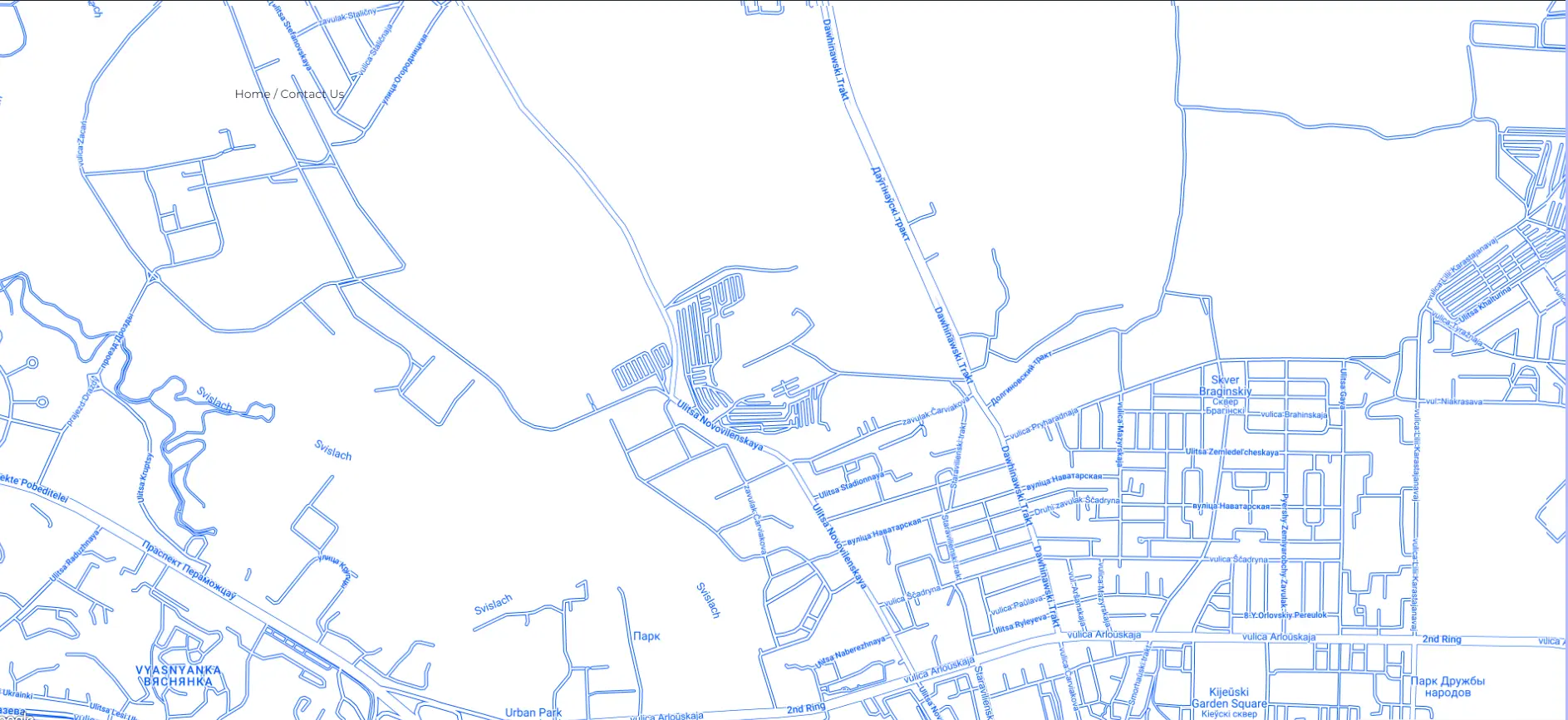A loan agreement is one of the most common ways to formalize financial relationships between individuals and legal entities, as well as between individuals and other individuals. It regulates the procedure for transferring funds, repayment terms, and potential interest for the use of money. However, in practice, situations often arise where the borrower fails to fulfill their obligations on time or refuses to repay the debt altogether.
Debt collection under loan agreements in Belarus is a legal procedure designed to protect the lender’s interests and restore their rights. It is essential to understand that a properly drafted loan agreement and well-documented proof of fund transfer are key to successfully recovering the debt. Therefore, we recommend consulting a lawyer when drafting loan agreements and seeking legal advice regarding debt recovery. In this article, we explain how a lender should act in case of loan default, what pre-trial measures can be taken, and how to initiate legal proceedings.
We will also outline common mistakes made by creditors that may hinder debt recovery and provide practical advice on how to avoid them. The successful recovery of funds under a loan agreement requires attention to detail and a solid understanding of legal tools, which is why professional legal support is crucial in such matters.
Key Features of a Loan Agreement
We recommend signing a loan agreement in written form, even though a written form is legally required only for loans between legal entities, and between individuals if the loan amount exceeds 10 base units (currently BYN 420).
A loan agreement takes legal effect only after the funds are transferred to the borrower. Merely signing a loan agreement, without the actual transfer of money, does not create a repayment obligation for the borrower.
A loan agreement may be interest-free or may stipulate interest on the loan amount.
Loans in foreign currency are not permitted in transactions between legal entities or between legal entities and individuals. However, the loan amount can be denominated in Belarusian rubles equivalent to a foreign currency. In this case, we recommend specifying the exchange rate on a particular date for calculating the repayment amount.
We also recommend that the agreement clearly states the repayment deadline and penalties for late repayment.
For assistance with drafting a loan agreement, we advise consulting our experienced legal professionals.
Grounds for Debt Collection under a Loan Agreement
Effective debt collection under a loan agreement largely depends on how reliably the lender can prove the transfer of funds and the borrower’s contractual obligations. It is important to prepare in advance by gathering evidence and properly drafting all documents to avoid legal issues in case debt recovery becomes necessary.
Proof of Fund Transfer
One of the key elements in debt recovery is proving that the borrower received the loan. This requires clear and reliable evidence of the fund transfer. In practice, the following documents are used:
- Bank payment orders or statements confirming the transfer of funds from the lender’s account to the borrower’s account;
- Cash receipts or vouchers (for cash transactions);
- Other documents confirm the actual transfer of the loan amount.
A lack of such evidence can significantly complicate the debt recovery process.
Documents and Evidence: Receipts, Bank Statements, Correspondence
A receipt is one of the simplest and most effective ways to confirm a loan. It typically states the loan amount, the date of transfer, and the repayment deadline and includes the borrower’s signature. A receipt is often used in addition to or in place of a formal loan agreement.
Bank statements and transfers serve as proof of fund transfers to the borrower’s account and are especially relevant when the loan was issued via wire transfer.
Correspondence between the parties (such as emails or messenger chats) may also be used to demonstrate that both parties agreed on the loan terms and that the borrower acknowledged the debt. It is essential that the communication clearly shows mutual agreement on the transfer and repayment of the funds.
Loan Agreement Terms (Deadlines, Interest, Repayment Procedure)
Having specified terms in the loan agreement significantly simplifies the debt collection process. The agreement (or promissory note) must include:
- The exact loan amount.
- The deadline for repayment.
- The interest rate (if applicable).
- The repayment procedure (in installments or a lump sum, cash or non-cash).
- Conditions of liability for late payment (fines, penalties).
Clearly defined loan terms allow the lender to prove the borrower’s obligations in court without unnecessary disputes and successfully recover the debt.
Pre-litigation Dispute Resolution
If the borrower fails to repay the loan within the agreed term, it is possible (and sometimes necessary) to initiate pre-litigation debt collection. Pre-litigation resolution helps save time and money, while also preserving business relations with the borrower in case future cooperation is expected.
Sending a Written Claim to the Debtor
The first step in pre-litigation resolution is sending a written claim (demand) to the debtor. In the claim, the lender:
- Specifies the amount of debt (principal, interest, penalties if provided by the agreement).
- Refers to documents confirming the debt (loan agreement, promissory note, bank statements).
- Indicates the deadline for voluntary repayment and the repayment procedure.
- Warns about possible court action if the claim is not fulfilled within the specified period.
Sending the claim not only demonstrates the lender’s good faith but also provides the court with evidence that the lender attempted to resolve the dispute amicably.
Debt Recovery in Belarus
Resolve debt recovery issues in Belarus for companies and legal entities with professional legal support!
Possibility of Negotiations and Debt Restructuring Agreement
In some cases, the borrower may be willing to discuss repayment terms. Negotiations help resolve the issue without going to court, especially if the borrower is facing temporary financial difficulties.
The lender may offer debt restructuring options, such as:
- Installment payments.
- Reduction of monthly payment amounts.
- Extension of the repayment period.
It is important to document any agreements in writing (for example, as an addendum to the loan agreement) to enable enforcement through the courts if necessary.
Deadlines and Features of Pre-litigation Resolution
The timeframe for pre-litigation dispute resolution may be specified in the loan agreement. If not, the lender follows legal norms regarding the claim procedure. The response period to the claim is one month from receipt, although another term may be stipulated in the agreement.
Pre-litigation resolution is mandatory when the loan agreement involves a legal entity. Our experienced lawyers provide consultations on pre-litigation debt collection under loan agreements and prepare the necessary documents to support these efforts.
Pre-litigation resolution not only increases the chances of voluntary fulfillment of obligations by the borrower but also allows the court to consider the lender’s good faith when making a decision.
Thus, pre-litigation dispute resolution is a crucial stage in protecting the lender’s interests, saving resources, and time. If this stage does not yield results, the lender can confidently proceed to judicial debt collection.
Judicial Debt Recovery
If pre-trial settlement attempts have failed, the creditor has the right to file a lawsuit for debt recovery under the loan agreement. Judicial recovery allows the creditor to officially confirm the debt and obtain an enforcement document for compulsory debt collection. Legal assistance is usually required to pursue debt recovery through the courts. Therefore, we recommend consulting our experienced attorney.
Filing a Statement of Claim
To initiate judicial proceedings, the creditor files a statement of claim at the court located either where the debtor resides or where the obligation is to be performed. The claim should specify:
- The principal amount of the debt.
- Interest (if provided for in the contract).
- Penalties (fines, late fees).
- Compensation for expenses incurred by the creditor (including payment of the state fee).
The creditor must also attach evidence of the loan transfer and proof of the debtor’s default.
The amount of the state fee is calculated based on the claim amount and must be paid before filing the claim. Usually, this fee equals 5% of the amount to be recovered. This sum is referred to as the “claim value.” The payment receipt for the state fee must be attached to the statement of claim.
Attaching Evidence to the Claim
The creditor is required to attach documents to the statement of claim that confirm the loan transfer and non-repayment of the debt, such as:
- The loan agreement or IOU.
- Bank statements confirming the transfer of funds.
- Correspondence between the parties (if it confirms the debtor’s obligations or acknowledgment of the debt).
- A written demand letter sent to the debtor with proof of delivery.
The more complete the set of documents, the higher the chances of a quick and successful debt recovery.
Court Consideration of the Case
The court examines the case based on the evidence and the parties’ positions. The borrower is given the opportunity to present objections and evidence (e.g., absence of debt or partial repayment).
After reviewing the case, the court issues a decision to recover the debt amount, interest, and penalties, as well as reimbursement of legal costs, including the state fee.
If the debtor admits the debt amount, the creditor may recover the debt through a simplified procedure (order for payment) without a court hearing or summoning the parties.
Enforcement Document and Its Compulsory Execution
Once the court decision comes into force, the creditor obtains an enforcement document (writ of execution), based on which they may apply to the enforcement authorities to collect the debt from the debtor.
Enforcement proceedings may include freezing funds in the debtor’s accounts, seizing property, or other measures provided by law.
Thus, judicial debt recovery under a loan agreement allows the creditor to officially confirm the debt and use enforcement mechanisms to protect their interests. Proper document preparation and timely payment of the state fee are essential for an effective judicial process.
Problematic Cases of Debt Recovery
Even with a loan agreement, debt recovery can be complicated by several problematic situations. Below are common issues and ways to protect the creditor’s interests.
Lack of a Written Agreement
Sometimes, parties enter into an oral loan agreement and transfer money without signing a written contract. This complicates the recovery process since a written form easily confirms the borrower’s obligations.
However, even without a written agreement, the creditor can prove the loan by other means, such as:
- IOUs confirming receipt of funds.
- Bank statements showing transfers to the borrower’s account or card.
- Correspondence (emails, messenger chats) indicating that the money was lent.
In such cases, providing convincing evidence to the court of the loan transfer and the borrower’s obligation to repay is especially important.
Debtor’s Refusal to Acknowledge the Debt
Sometimes the borrower tries to avoid fulfilling their obligations by denying the debt. They may claim the money was given under other conditions (e.g., as a gift or repayment of a prior debt).
In such cases, the creditor needs to present evidence confirming that the disputed amount is indeed a loan. Key evidence includes contracts or IOUs, bank transfers with payment details, and correspondence in which the borrower admits to the debt.
The more comprehensive the evidence, the higher the chance of successful judicial recovery.
Disputing the Transfer of Funds
The debtor may claim that the money was never transferred or that the debt amount is inflated. This is particularly relevant if the transfer was made in cash without supporting documents.
Here, the creditor should:
- Provide bank statements if the transfer was non-cash.
- Present IOUs or other documents confirming the transfer.
- Request witness testimony if applicable.
Clear documentation of repayment terms — including deadlines, amounts, and interest — either in writing or through correspondence — helps the court establish the debt amount.
Practical Tips for Creditors
To minimize the risk of non-repayment and simplify the recovery process in case of disputes, creditors should take specific measures in advance. Below are practical recommendations to protect your interests.
Properly Draft the Loan Agreement
Always conclude the loan agreement in writing, even if you trust the borrower. This greatly facilitates debt recovery if the borrower fails to make repayment.
Specify key terms: loan amount, repayment period, interest (if any), repayment procedure.
Define the parties’ obligations, including early repayment and consequences of breach.
Include parties’ details (passport data, addresses) and the contract date.
Keep Documents
Keep the original loan agreement and borrower-signed IOUs (if any).
Save bank statements or other proof of funds transfer.
Preserve all correspondence with the borrower (including emails and messengers) and save screenshots or printouts.
When lending cash, issue an IOU that clearly states the amount, date, repayment obligation, and the borrower’s signature.
Maintain Correspondence with the Borrower
Communicate in writing (emails, SMS, messengers), specifying the contract and repayment terms.
If the borrower promises to repay, ask for written or recorded confirmation.
Record all promises and agreements to use as evidence if necessary.
Seek Legal Assistance
If the borrower avoids repayment or denies obligations, do not delay consulting lawyers.
Lawyers can draft demand letters, properly collect evidence, and prepare the claim.
Professional help is especially important if the debt is disputed or if there is no written contract.
Conclusion
Debt recovery under a loan agreement is a process that requires careful attention to detail, from properly drafting the contract to thoroughly collecting evidence. If the borrower refuses to repay, the creditor can use both pre-trial measures and court proceedings to protect their rights.
It is crucial to plan how to prove the loan and seek professional assistance promptly. Our company’s lawyers are ready to analyze your case, help prepare documents, resolve disputes pre-trial, or file a court claim. We support you at all stages of debt recovery, providing reliable legal protection for your interests.
Contact us for a consultation to safeguard your rights and save time and resources.
Contact us
If you have any questions related to debt collection under loan agreements in Belarus, we will be happy to help! Our long-term experience will help you choose a lawyer to represent your interests.
- +37529142-27-19 (WhatsApp, Viber, Telegram);
- info@ambylegal.by.





